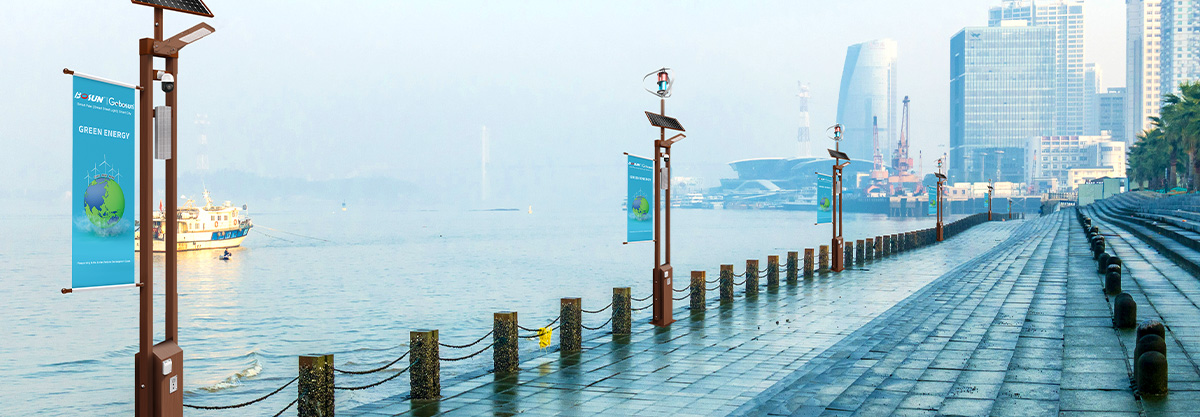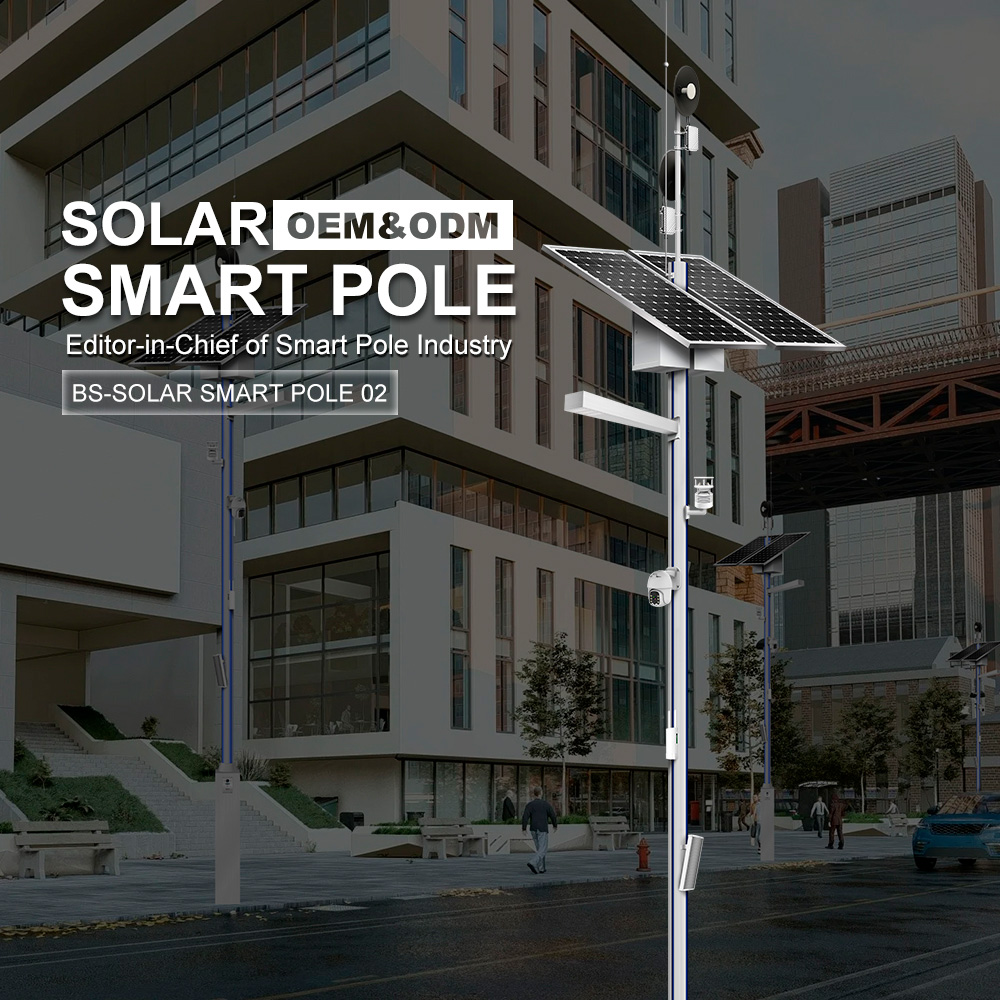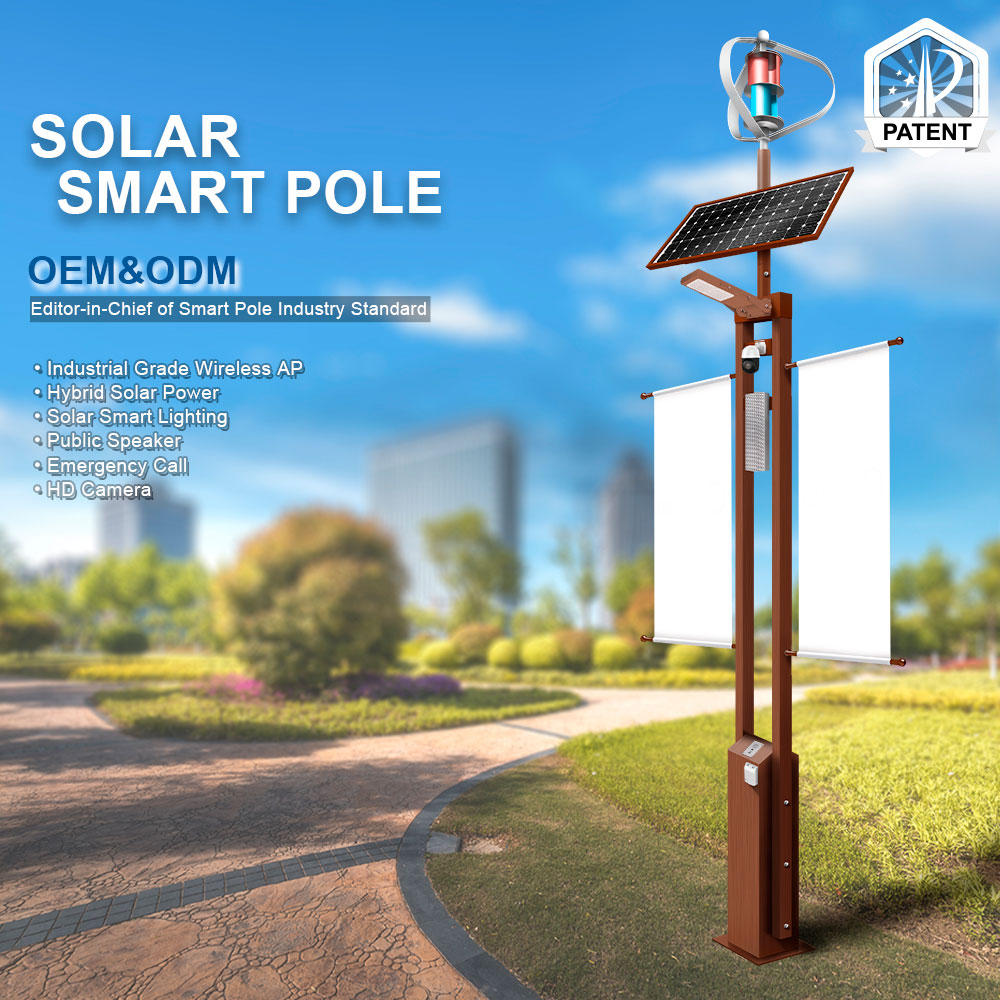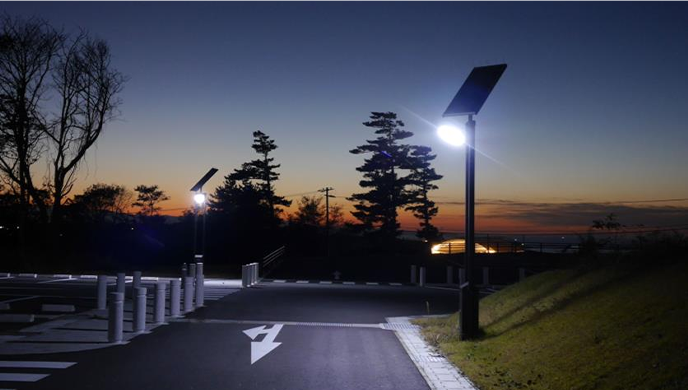Solar Smart Pole Products
Core Features and Technical Details
- 1. Solar Power System
- High-efficiency solar panels (mono or polycrystalline) mounted on top or as an integrated panel arm.
- MPPT solar charge controller optimizes charging efficiency and battery protection.
- Lithium or LiFePO4 batteries for stable, long-lasting energy storage—typically supporting 3–5 days of autonomy.
- Ideal for off-grid installations, reducing electricity costs and carbon emissions.
- 2. LED Smart Lighting
- High-lumen LED lamps (30W to 120W+) with optical lens customization for wide or narrow roads.
- Dimming & scheduling via smart controllers (time-based, sensor-based, or adaptive lighting).
- Motion sensors for energy-saving brightness adjustment based on pedestrian or vehicle presence.
- 3. Smart IoT Integration
- Supports a variety of modules for enhanced functionality:
- CCTV cameras with 4G or Wi-Fi transmission.
- Environmental sensors (PM2.5, noise, temperature, humidity).
- One-click emergency alarm systems.
- Public Wi-Fi routers.
- Digital signage and smart display panels.
- 4. Remote Monitoring & Control
- Real-time system status via cloud-based platforms or LoRa/4G networks.
- Alerts for battery status, faults, or lighting failures.
- Centralized control panel for multiple poles (ideal for municipal-level deployment).
- 5. Modular & Aesthetic Design
- Sleek, modern appearance customizable to project needs.
- Modular construction allows for flexible configuration—add/remove components like EV chargers, speakers, or interactive kiosks.
- Available in single-arm, double-arm, or decorative pole designs.
-
FAQs About Solar Smart Pole
- What is a solar smart pole?
- A solar smart pole is a multifunctional street pole powered by solar energy. It combines high-efficiency LED lighting with IoT technologies such as environmental sensors, surveillance cameras, Wi-Fi, EV charging, and smart city connectivity—all integrated into a single off-grid or hybrid system.
- Where can solar smart poles be used?
- They are suitable for:
- Urban streets and expressways
- Parks, campuses, and public squares
- Remote or rural areas without grid access
- Tourist zones, parking lots, and smart communities
- How long do the batteries last?
- Depending on the type and capacity, lithium or LiFePO₄ batteries typically last 5–8 years, with autonomy for 3–5 cloudy or rainy days.
- What happens on cloudy or rainy days?
- The stored battery energy ensures lighting continues during poor weather. Many systems are designed to last several nights without direct sunlight. Some models also include wind turbine backup or grid-tied hybrid options for enhanced reliability.
- Is the system remotely manageable?
- Yes. With LoRa, 4G/LTE, or Wi-Fi modules, solar smart poles can be connected to a smart city control platform. This allows remote control, monitoring, fault detection, and data analytics in real-time.





